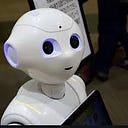A Markov Chain is a mathematical model used to describe a sequence of possible events in which the probability of each event depends only on the state attained in the previous event. It is a stochastic process that exhibits the Markov property, which means that the future state of the system only depends on its current state, not on the sequence of events that preceded it.
Key elements of a Markov Chain include:
- States: These are the different situations or conditions that a system can be in. For instance, in a weather model, the states might be “sunny,” “cloudy,” or “rainy.”
- Transition Probabilities: These represent the likelihood of moving from one state to another. These probabilities are usually arranged in a matrix known as the transition matrix, where each entry indicates the probability of moving from one state to another.
- Time Homogeneity: In a Markov Chain, the probabilities of transitioning between states remain constant over time. This property is known as time homogeneity.
Markov Chains find applications in various fields, including:
- Economics: Modeling financial markets, income distribution, and employment dynamics.
- Biology: Analyzing DNA sequences and modeling population genetics.
